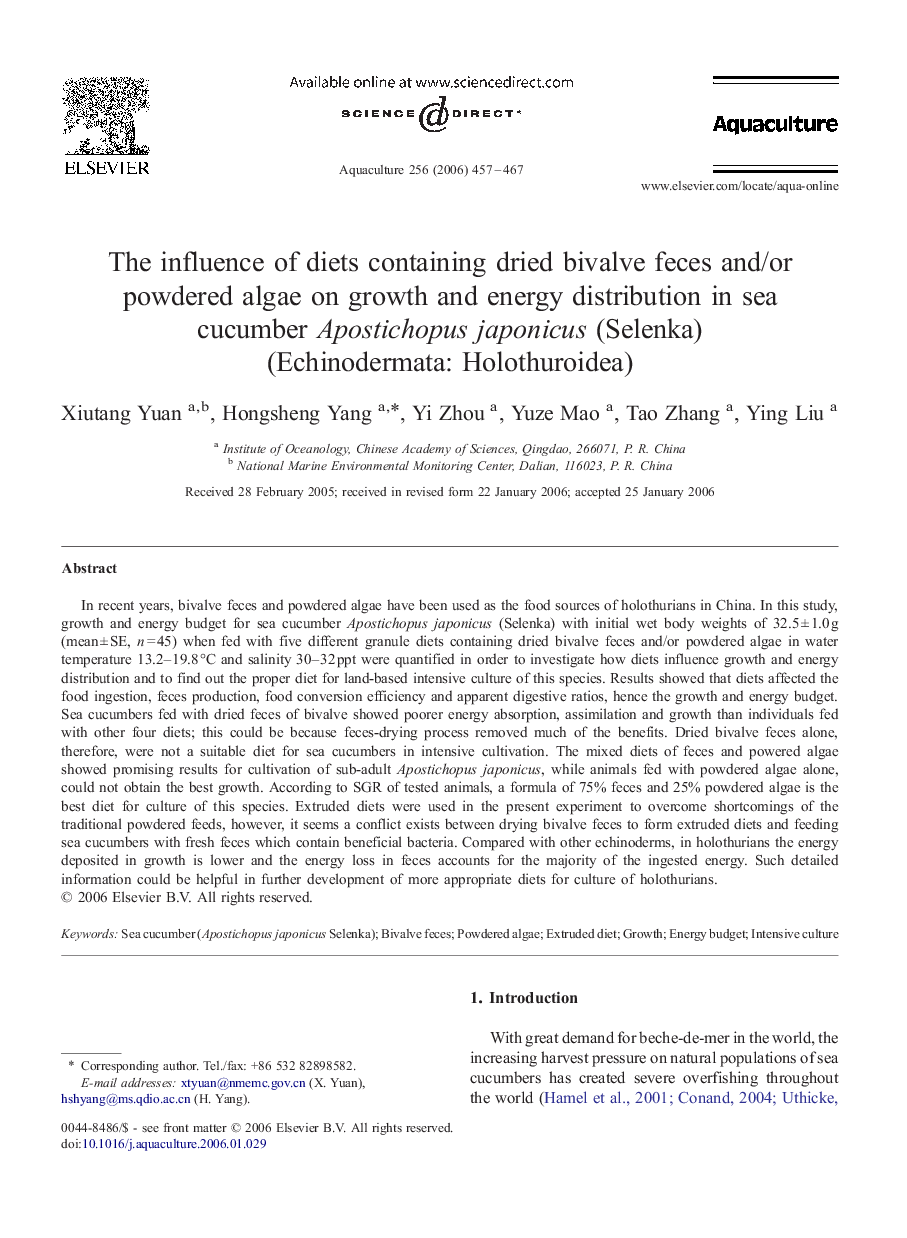| کد مقاله | کد نشریه | سال انتشار | مقاله انگلیسی | نسخه تمام متن |
|---|---|---|---|---|
| 2425944 | 1552985 | 2006 | 11 صفحه PDF | دانلود رایگان |

In recent years, bivalve feces and powdered algae have been used as the food sources of holothurians in China. In this study, growth and energy budget for sea cucumber Apostichopus japonicus (Selenka) with initial wet body weights of 32.5 ± 1.0 g (mean ± SE, n = 45) when fed with five different granule diets containing dried bivalve feces and/or powdered algae in water temperature 13.2–19.8 °C and salinity 30–32 ppt were quantified in order to investigate how diets influence growth and energy distribution and to find out the proper diet for land-based intensive culture of this species. Results showed that diets affected the food ingestion, feces production, food conversion efficiency and apparent digestive ratios, hence the growth and energy budget. Sea cucumbers fed with dried feces of bivalve showed poorer energy absorption, assimilation and growth than individuals fed with other four diets; this could be because feces-drying process removed much of the benefits. Dried bivalve feces alone, therefore, were not a suitable diet for sea cucumbers in intensive cultivation. The mixed diets of feces and powered algae showed promising results for cultivation of sub-adult Apostichopus japonicus, while animals fed with powdered algae alone, could not obtain the best growth. According to SGR of tested animals, a formula of 75% feces and 25% powdered algae is the best diet for culture of this species. Extruded diets were used in the present experiment to overcome shortcomings of the traditional powdered feeds, however, it seems a conflict exists between drying bivalve feces to form extruded diets and feeding sea cucumbers with fresh feces which contain beneficial bacteria. Compared with other echinoderms, in holothurians the energy deposited in growth is lower and the energy loss in feces accounts for the majority of the ingested energy. Such detailed information could be helpful in further development of more appropriate diets for culture of holothurians.
Journal: Aquaculture - Volume 256, Issues 1–4, 15 June 2006, Pages 457–467